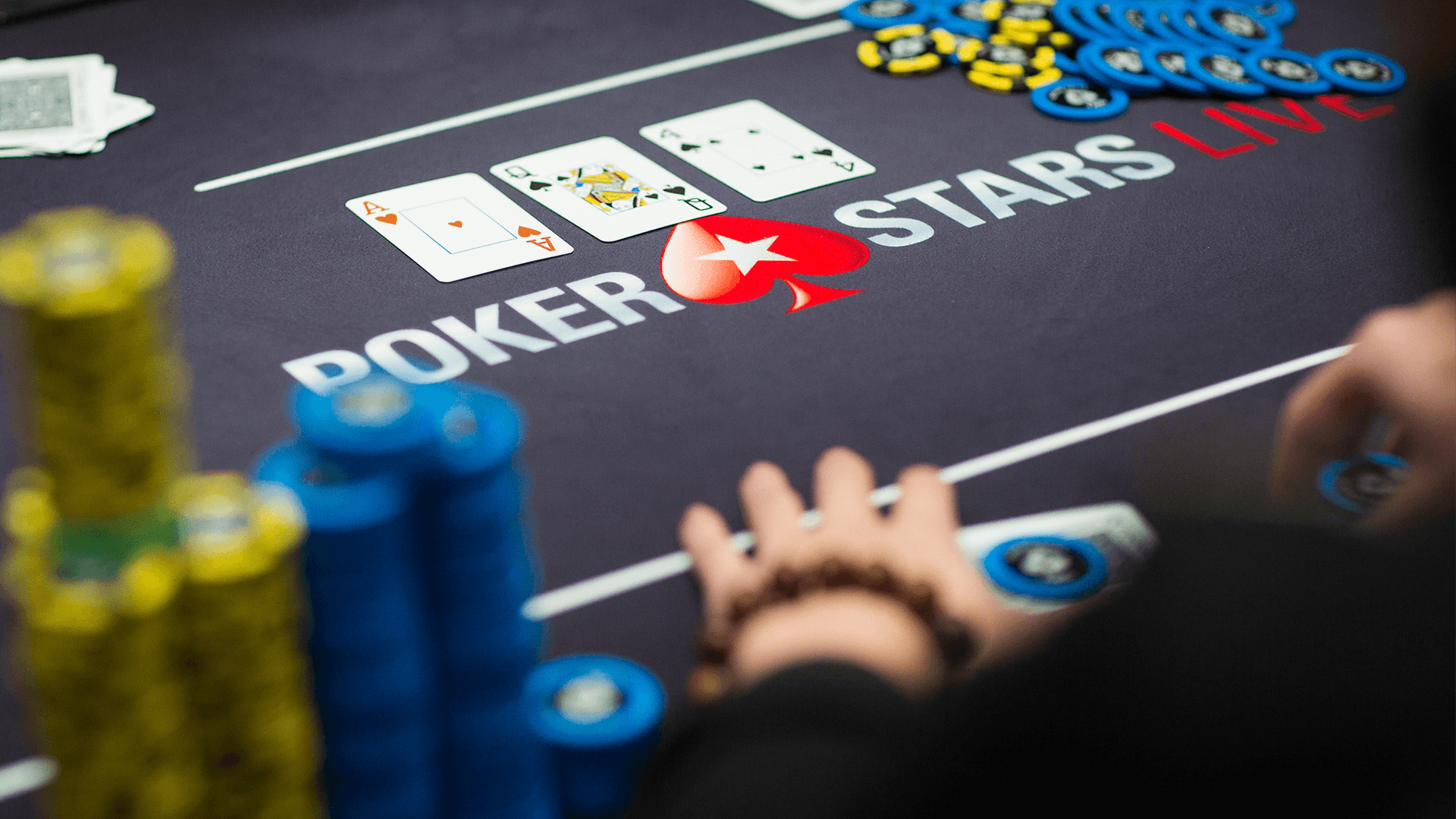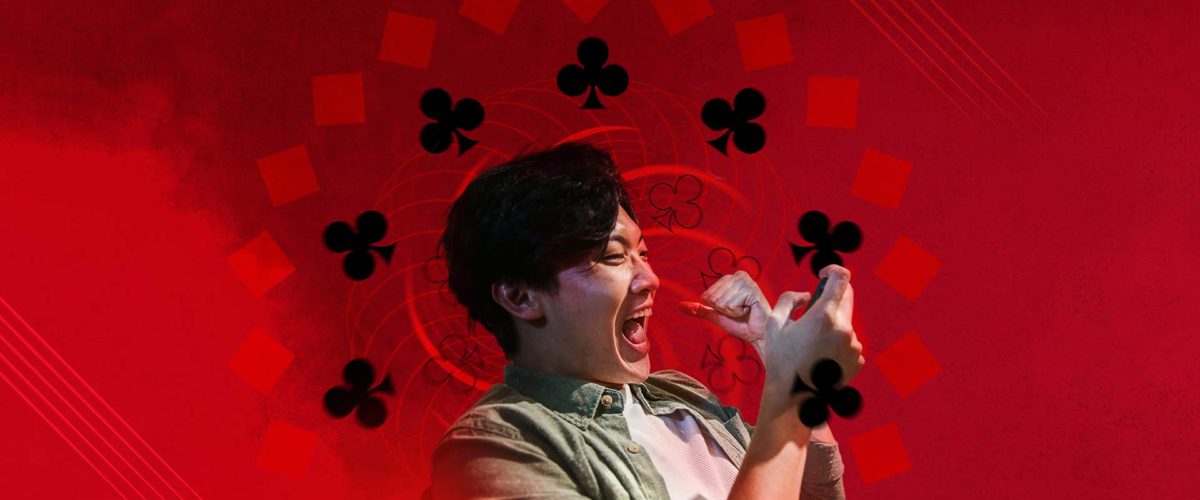Flop Strategy in Pot Limit Omaha (PLO)
Omaha is a Flop Game
A good starting hand selection before the flop and a suitable flop strategy are key factors to win at PLO. The decisions we make on the turn and river have a secondary role, since at that point of the hand at least one player will be all-in or committed to the pot by his previous bets.
Pot Limit Omaha is a game filled with action, especially on the flop. From this point on, you can bet all your chips in just a few steps and it is not uncommon to do so.

Just like in Texas Hold’em, the flop is the first moment when anyone can have a made 5 card hand, and also when the strength of a draw can be measured. The strength of your hand changes dramatically from street to street in Omaha, but never so much as on the flop. We can use our 4 hole cards to make 6 different hand combinations (instead of the single hand we can make in Texas Hold’em).
Example:
We have A♥ K♠ J♠ 10♥ . We can make 6 different combinations of playable hands on the flop:
A♥ K♠
A♥ J♠
A♥ 10♥
K♠ J♠
K♠ 10♥
J♠ 10♥
If we hit the flop we will have a made hand or strong draws or, even better, a mixture of both. However, if we don’t hit the flop, the hand quickly loses its value. Here, a 5♣ 6♣ 7♣ flop is so dangerous that we will fold to any raise. For most players this is a reason to keep the pot small before the flop and then, if they make good hands, bet them hard.
The flop brings important information about how many outs will improve our hand or, on the contrary, develop our opponents hands. This information should help us to effectively choose our actions.
The Nuts
It has been said that there are only two hands in Pot Limit Omaha. There is the nuts, or the best possible hand on board, and then there is everything else. While extreme, this is a helpful thought to keep in mind when learning the game. The best possible hand wins a large percentage of pots in PLO, and most of the big ones. Always be aware of what the nuts are on every street, and avoid drawing to hands that could still finish second best.
Position
Position is an important concept in all forms of poker, but particularly so in Pot Limit Omaha. You must extract value when you have the best hand, and this is a far easier task from late or last position. Furthermore, the dynamics in an Omaha hand can change dramatically throughout the streets, and the information you will gain by acting after your opponents cannot be over emphasized. Be extremely selective with the hands you play in early position, and conversely save your speculative plays for when you are last to act.
Bet sizing
In Pot Limit Omaha, it is useful to get as much money in the pot as possible while you have the best hand. Even strong hands are vulnerable in Omaha, and a small bet will often give your opponents good value to call. If you are going to bet, a good rule of thumb is to bet at least 2/3 of the total pot size.
General strategy
A basic PLO strategy says: always play aggressively with a good hand… and often with a good draw. Slow playing, or checking a strong hand in order to gain value later on, is rarely a decent choice. The best full house, quads and straight flushes are the hands we can slowplay sometimes, but we should not slowplay the other hands. We play against strong draws too often and the turn or the river could be our downfall.
Example:
Our hand is 7♣ 7♦ 8♦ 9♣
The flop is 10♥ 10♠ 7♠
We have a full on the flop. But our hand is not the best possible hand (a player with TT or T7 can beat us) and we are exposed to lose on the turn or river if our opponent has a T.
If we check on the flop and when the turn brings the J♠ our opponent bets, we will be in trouble as we also will lose against JJ, JT, and 8♠ 9♠ . That’s why we should make big bets on the flop while we are still a favorite to win the hand. A small bet here doesn’t help us in any way, but only gives a cheap draw to our opponent.
Draws
Let’s talk about draws, those hands that make Pot Limit Omaha an expensive game and full of action. There are some draws in Pot Limit Omaha with more chances of winning than a made hand. For example, some straight draws can have up to 20 outs and will win the hand in 58.54% of cases against a flopped three of a kind.
Strong draws can often be played like made hands, especially when they have a lot of outs to the nuts and when there are several draws.
Example:
We have K♠ Q♠ J♣ 10♣ .
The flop is
a) A♣ K♥ 6♥
b) A♣ K♣ 2♠
On the first flop we have the highest straight draw with any Ten, Jack or Queen that is not a heart. On the second flop we have not only the highest straight draw, but the second best flush draw and even a royal flush draw.
On the first flop we have just 6 outs to the nuts, so we should play this hand passively (playing check-call or check-fold, depending on the case). If we have position and our opponent checks we could try a semibluff.
In the second flop we have 8 outs to the nut straight, 7 outs to the second nut flush, and 1 out to a royal straight flush. In this spot we might decide to play the hand as a made hand on the flop. If we miss the turn, we can evaluate if it is still worthwhile to semibluff. However, in position we may check to see a free card if we believe we are beaten.
If we are called on the flop and the board pairs, we are often check behind and should then play cheaply (check/check, check/call, check/fold).
Example #1: a good flop for a draw
We have A♥ 10♦ 9♥ 8♥ and two players limp in from early positions. We also call. Both blinds call and the five of us see the flop.
The flop is 7♥ 6♥ 4♣ .
That flop is fantastic for our hand. We have the nut flush draw and an open ended straight flush draw. There’s more: any heart will help us, plus any 5, any T, any 9 and any 8 . We have 19 outs!
Example #2: a bad flop for a draw
We have A♠ K♠ 4♦ 5♦ . We limp in from the button and we are the second to join the pot. The blinds call.
The flop is 6♥ 7♥ J♦ .
This flop is bad for us. We have an open ended straight draw and a backdoor flush draw, but we can only count three outs to the nuts (3♠ 3♦ and 3♣ ). The remaining outs could help our opponents too. This is why we should fold against any aggression.


